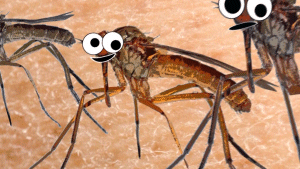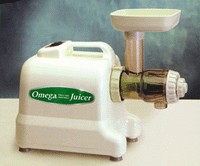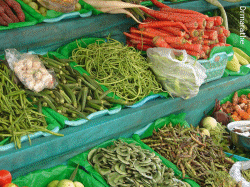
|
Summertime Vibrant Living by Boyd Martin
Here are a few of the issues, as I see it...
Getting a tan
As with anything we can eat, drink or feel, moderation is the key, and too much sun is just as bad as not enough. To cope with this potentially painful limitation, science, corporations and their marketing armies have exposed their buying publics to all manner of toxic solutions to smear on skin in an attempt to block the evil UV. For the first time, this year, I noticed one company shamelessly advertising their sunscreen as a protection against skin cancer. The fact is, with the toxic chemicals in their sunscreen, you would be adding a health risk instead of blocking one.[LINK] Plus, it is accepted wisdom in alternative health circles, that what you eat is much more likely to cause skin cancer than your exposure to sunlight.[LINK] The main thing is to avoid getting burned. It is the burned skin that has the potential to mutate into cancerous forms. With all the hype and scare about skin cancer, many people simply opt out from outside. This is not good, either. What's a health-conscious sun lover to do? Well, plenty. First of all, it is well known that anti-oxidants protect skin cells from sun damage. Therefore, increasing the intake of anti-oxidant-rich foods will help protect you from the sun, primarily available in fresh vegetables.
Red, yellow, and orange fruits and vegetables contain carotenoids which reduce sunburn. Tart cherries and peppermint leaves are rich in perillyl alcohol, recently found to stop cancer formation in human cells under intense UV light. Green tea contains antioxidants called EGCGs, which has been shown to block DNA damage in light-exposed human skin cells. Oranges, lemons, and limes have limonene, linked to a 34% reduction in skin cancer risk among 470 people in a University of Arizona study. (Try this: brew peppermint and green tea, add lemons and/or limes, or mix with fresh-squeezed orange juice). There are natural, non-toxic sunblocks out there that actually work, but our favorite is Elina's Skin Care Sun Shelter. Although designed with women's makeup in mind, Sun Shelter is great for guys and kids, offering excellent protection from UVA and UVB.
Bugged by summer? Luckily for us, there are perfectly fine alternatives to keeping the bugs at bay. There are well-known herbal oils that do the trick, such as cedarwood, citronella, peppermint, eucalyptus, rosemary, pennyroyal, and lemongrass, and many products make use of them instead of DEET.[LINK] In fact, it was announced in 2001, by the American Chemical Society (!), that the lowly catnip oil is 10 times more effective than DEET. The primary target of all this repelling is the lowly mosquito, and in light of West Nile this innocent critter has been elevated to red alert status by its human symbiotes. So, how DO mosquitos end up feeding on us? Bottom line: sweat, carbon dioxide and lactic acid attract mosquitoes. Using sensors on its antennae, a mosquito picks up body heat, odor and carbon dioxide from exhaled breath. The mosquito follows the trail upwind to its source. Once mosquitos get closer, they're attracted to other cues such as dark colors, moisture in the air, and silhouettes of potential victims. British researchers found that mosquitoes responded to the body cues of an animal standing 45 feet away. Mosquitos do not become active until temperatures reach about 45° F. Some research found that mosquito activity increased with increasing temperature to about 68°. Above 68°, mosquitoes become less active, and the pests take cover at the upper threshold temperature of about 82°. Wind speed higher than 12 MPH will ground mosquitoes, so a good, brisk fan blowing across the porch on calm days could be the ticket. Buzz Away, Natrapel, and Bite Blocker are all examples of non-DEET repellents.
It's a juicy season! The health and economic benefits of juicing vegetables and fruits have been well-known for over three-quarters of a century--recently on TV infomercials by such health gurus as Jack LaLanne, and Jay "The Juice Man" Kordich; and in the past by Dr. Bernard Jensen, and Ann Wigmore. Back in 1930, Dr. Norman Walker invented the "Norwalk" juicer, in following his philosophy of eating only living foods for health. The Norwalk juicer is still sold today: it cuts and grates the produce with the resulting mass placed in a linen bag and then under a hydraulic press. The first masticating juicer--one that grinds and then presses the juice out--was invented in 1954: The Champion Juicer. Centrifugal juicers followed, whereby the fruits or vegetables are ground down with the juice being forced out through a high-speed spinning screen. As the juicing experience gained popularity, it became clear that certain juicing machines were better than others for different reasons. The main issues centered around the production of heat. Heat is bad when it comes to juicing, since any heat over room temperature quickly starts to destroy the vital enzymes in the food--the stuff that makes it "living." Also, oxidation of the juice has been an issue, since freshness and longevity of the juice depends on its LACK of oxidation. Both heat and oxidation are created by high-speed movement that some juicers use to do their work. Thus, the centrifugal and masticating juicers get a mark against them for this reason, however, they are usually the least expensive and faster than milling-screw-type juicers. They are great introductions to the world of juicing, though, and as long as you simply drink the juice immediately after making it, you'll manage to get down most of the valuable enzymes in the food. Low-speed, milling juicers are the most efficient, moderately priced, and slowest, but are considered nutritionally the best. In the case of our Omega 8002, a hard plastic screw is slowly driven by a 1/3 HP motor that cuts then forces the pieces into a metal screen. As the screw crushes the food, the juice runs out the bottom, and the surprisingly dry pulp is expelled at the end. Yes, it is a process to make juice this way, but the quality of the food you get for the time it would take to make a hamburger, or a BLT, is well worth it. After drinking about 8-10 oz. of pure juice, the appetite is well-serviced, and body energy level comes way up. It's living food, and bodies like that! One of my heroes, Dr. Mercola, lays out concisely the three main reasons why you will want to consider incorporating vegetable juicing into your health program:
Also, keep in mind, that the greatly increased amounts of anti-oxidants you'll be consuming helps your skin stay healthy in the sun. Juicing cherries, lemons, oranges, limes, dark leafy greens (we like beet tops, spinach and kale), carrots, cantelope, tomatoes, apricots, and mango is especially effective in skin UV protection. We always shop for organic produce, preferably at a farmers' market, where most of the produce has been harvested within a couple of days of sale--and it's ripe and clean. One of our raw food gurus, Paul Nison, suggests trying new foods for juicing by visiting ethnic markets. "There are so many kinds of fruits in this world, you could eat one different fruit every day for the rest of your life and not come close to tasting all the fruits of the world. We get most of them in this country. They don't grow here, but we get them here. People have to open up their horizons and shop at Asian markets or Latin groceries and see the different types of foods that are out there." |
 Every season carries with it its own particular health issues, but summer's are the most fun. After all, the issues are mostly related to hobbies and recreation. Crawling out of those hermetically-sealed workplaces, and air-conditioned homes, to bake under the hot sun, and be food for all sorts of flying critters, brings summer a charm all its own. Regardless of the drawbacks, it's just plain fun to be outside--and if I haven't given away my bias by now, summer is my favorite season!
Every season carries with it its own particular health issues, but summer's are the most fun. After all, the issues are mostly related to hobbies and recreation. Crawling out of those hermetically-sealed workplaces, and air-conditioned homes, to bake under the hot sun, and be food for all sorts of flying critters, brings summer a charm all its own. Regardless of the drawbacks, it's just plain fun to be outside--and if I haven't given away my bias by now, summer is my favorite season!
 It would certainly follow that, at least on a man, the tan was considered attractive. It wasn't until the 1920's that women started exposing their skin to the melanin-stimulating sun. Aside from the fashionableness, doctors have recognized the value of "getting enough sun" since the 19th Century, as cure for rickets, bone disorders and improving general immune function. It's the
It would certainly follow that, at least on a man, the tan was considered attractive. It wasn't until the 1920's that women started exposing their skin to the melanin-stimulating sun. Aside from the fashionableness, doctors have recognized the value of "getting enough sun" since the 19th Century, as cure for rickets, bone disorders and improving general immune function. It's the  A
A  To DEET or not to DEET. Again, I was dismayed by that OFF! insect repellant commercial that shamelessly used the West Nile Virus scare to sell its product. The product, Off! Deep Woods, has the highest concentration of DEET than any product outside military use. DEET, aka diethyl-meta-toluamide, has been suspected of contributing to Gulf War Syndrome, and as a result, concentrations over 30% are banned by the military. The FDA, after initially finding DEET to be OK for kids in the 1950's, reversed itself upon further field reports, e.g. deaths, requiring concentrations no higher than 10% for children under 11 years old. My personal rule of thumb is, if people are dying from using something, I don't use it. Duh.
To DEET or not to DEET. Again, I was dismayed by that OFF! insect repellant commercial that shamelessly used the West Nile Virus scare to sell its product. The product, Off! Deep Woods, has the highest concentration of DEET than any product outside military use. DEET, aka diethyl-meta-toluamide, has been suspected of contributing to Gulf War Syndrome, and as a result, concentrations over 30% are banned by the military. The FDA, after initially finding DEET to be OK for kids in the 1950's, reversed itself upon further field reports, e.g. deaths, requiring concentrations no higher than 10% for children under 11 years old. My personal rule of thumb is, if people are dying from using something, I don't use it. Duh.
 For our lunch breaks here at Pure Energy Rx, the prez, Shay, recently purchased an Omega 8002 milling juicer! After a short learning curve, we've been having a blast grinding through pounds upon pounds of produce for that tasty reward.
For our lunch breaks here at Pure Energy Rx, the prez, Shay, recently purchased an Omega 8002 milling juicer! After a short learning curve, we've been having a blast grinding through pounds upon pounds of produce for that tasty reward.
 2. You need to eat one pound of raw vegetables per 50 pounds of body weight per day. Vegetable juicing allows you to accomplish this, as you can eat more vegetables than you would normally. By incorporating the juice into your eating plan you will easily be able to reach this goal.
2. You need to eat one pound of raw vegetables per 50 pounds of body weight per day. Vegetable juicing allows you to accomplish this, as you can eat more vegetables than you would normally. By incorporating the juice into your eating plan you will easily be able to reach this goal.